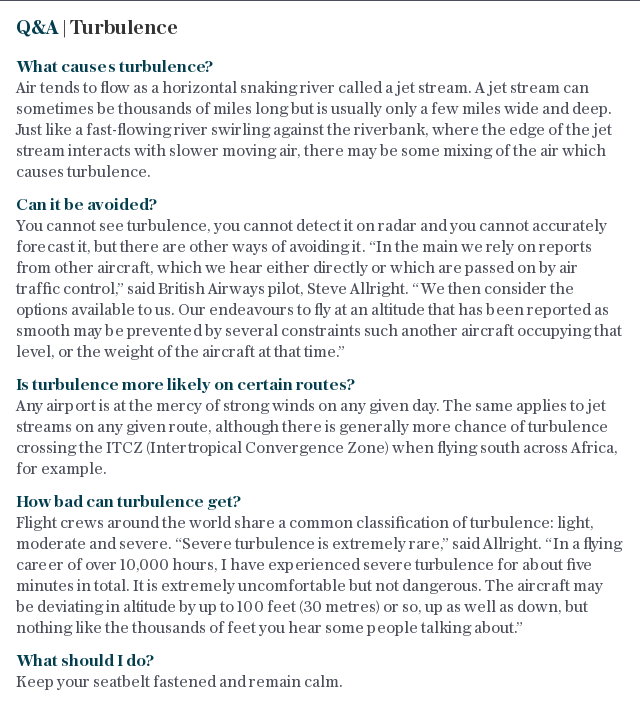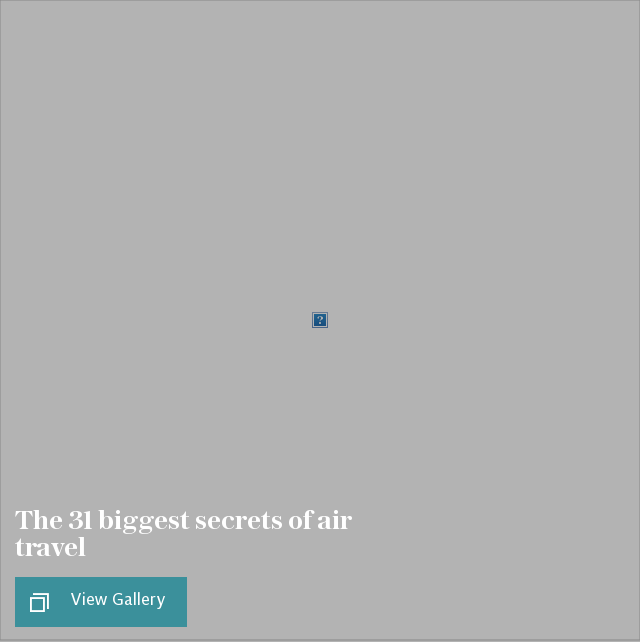Could laser technology make terrifying turbulence a thing of the past?

At best it’s inconvenient, at worst it’s terrifying. Nevertheless clear-air turbulence is a nuisance that we tolerate when travelling by plane, like being frisked going through security.
It’s set to get worse, too. According to scientists, clear-air turbulence is likely to become more common and more severe due to climate change; passengers, they say, are in for a rough ride.
But not if Boeing can help it. The plane manufacturer is preparing to test new laser technology that could allow pilots to detect clear-air turbulence up to 10 miles away.
That’s not far when you consider that the cruising speed of a passenger jet is about 550 mph; it basically gives the pilot 60 seconds to react. However, that’s just enough time to change course slightly or tell the cabin crew to batten down the hatches.

Developed by the Japan Aerospace Exploration Agency (JAXA), the new lidar technology will be tested on a Boeing 777 early next year.
The system works by projecting a laser from the front of the aircraft into the sky ahead. An optical sensor then tracks the light that is reflected back to the plane by particles in the skies. Software analyses the velocities of different airborne particles at different distances; significant fluctuations between the velocities indicates that clear-air turbulence is ahead.

When clear-air turbulence is detected, the pilot will be alerted, though Boeing is still working out how to deliver those alerts.
Pilots wouldn’t necessarily be able to take evasive action, but they could alert the flight crew, who could safely stow away scalding hot pots of coffee and tell passengers to buckle up.

The lidar will be tested early next year as part of Boeing’s ecoDemonstrator programme, which will also trial new biofuels, as well as 3-D printed components.
“This is all about accelerating technologies,” Doug Christensen, a manager in the ecoDemonstrator programme, told Wired. “We want to see if they work and how they integrate into the airplanes.”
If the lidar system is successful, Boeing claims it could find its way onto commercial airlines in a few years.
Turbulence is the most common cause of injury to air passengers – in US alone there are an estimated 58 injuries annually because of it – and according to the US Federal Aviation Administration, the number of injuries doubled between 1982 and 2003 (including adjustments made for the rise in number of flights).
It’s also expensive: damage and delays caused by turbulence is estimated to costs US airlines between $150m ($113m) to $500m (£377m) annually.



